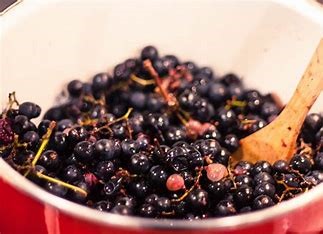Wild Jelly: What is it and how is it made?

MACOMB, Ill. — “Clark, that’s the gift that keeps on giving.”
No truer words have ever described a Jelly of the Month Club.
Yet, upon my annual family viewing of National Lampoon’s “Christmas Vacation,” a thought occurred to me that had not in the decades I’ve watched this movie. The idea of a jelly for every month seems quite excessive. Right? After all, the best jelly is certainly strawberry, but even that takes me months to eat a single jar. What deranged lunatic would need all that jelly? Perhaps I don’t eat as much jelly compared to others.
Illinois Extension is a great resource for those wanting to learn about preserving food and canning, which includes making jams and jellies. However, that is not the world I live in. I deal with plants. So when the canning questions come into the office, I send them to someone else. However, a recent call about making jelly stopped at my desk. How do you grow plants to make wild jelly?
The best way to grow plants for wild jelly is to figure out what wild jelly is in the first place. Turns out wild jelly is an umbrella term that indicates the materials collected for the jelly were growing wild or considered unconventional ingredients. You can narrow this term down by inserting whatever fruit or plant part you are using for the jelly into the name. Therefore, wild crabapple jelly is jelly made from crabapples.
How do you grow plants for wild jelly? First, you need to plan what type of jelly you would prefer. The caller I worked with had a few floral types and native fruit types of jelly. Investigating all the different types of wild jelly flavors builds a long list. It seems like you can make jelly out of anything. Here’s just a sample:
Wild common blue violet jelly – The very state flower of Illinois can be made into a jelly. The common blue violet is considered a weed by some, a groundcover by me, and jelly to the rest. It is commonly found in shaded spots in the lawn and landscape; however, you can buy seed from native plant suppliers.
Wild dandelion jelly – The online images and flavor descriptions of dandelion jelly has me willing to forgo strawberry jelly and give this a try. Dandelions can be found…well, everywhere! Plant breeders have developed different colors of dandelion flowers. So now you have color options for jelly.
Wild Aronia jelly – Aronia describes small deciduous shrubs (Photinia spp.) that produce a dark berry creating a red to black colored jelly. These shrubs also go by the name chokeberry because the fruit is very tart. I’ve eaten the berry straight from the plant and tried the jelly. Let’s just say I prefer the option where there’s lots of sugar included. There are cultivated chokeberries available for either better harvest or ornamental appeal.
The list goes on. There is wild blackberry jelly. Wild elderberry jelly sounds like a good treat. Go crazy with combined ingredients. Want to make a wild mulberry/raspberry jelly? Why not!
I think I may start my own jelly of the month club. You can make jelly from all types of plants found growing in the backyard. Cousin Eddie was right. Wild jelly is the gift that keeps on giving.
Miss Clipping Out Stories to Save for Later?
Click the Purchase Story button below to order a print of this story. We will print it for you on matte photo paper to keep forever.

